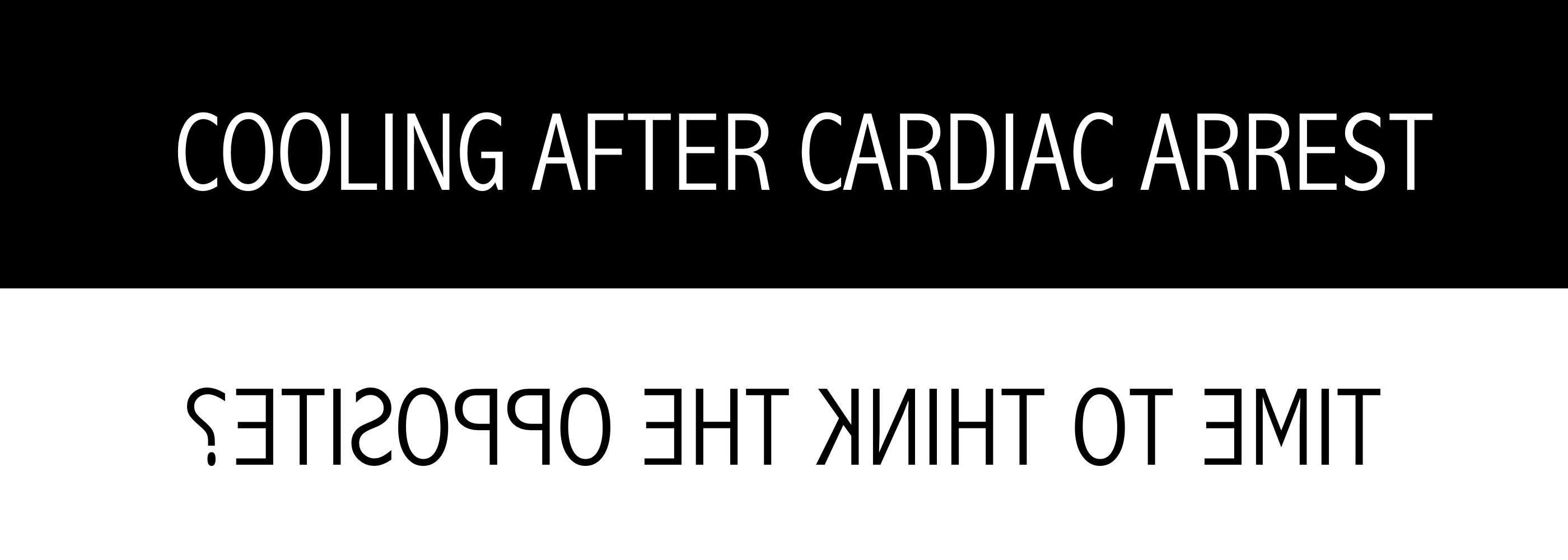Practice Changing Research?
Yesterday, after presenting at the AHA in Dallas, Nielsen et al published their fascinating study in the NEJM.
The results question our core practice in the management of out-of-hospital cardiac arrest.
The study:
- International multi-centre randomised control trial
- 950 unconscious adults after out-of hospital cardiac arrest of presumed cardiac cause
- Randomly assigned to targeted temperature management at either 33°C or 36°C.
- The primary outcome was all-cause mortality
- Secondary outcomes included a composite of poor neurologic function or death at 180 days, as evaluated with the Cerebral Performance Category
- (CPC) scale and the modified Rankin scale.
The results
- No difference in outcomes between cooling to 33 vrs 36 degrees
- In total, 939 patients were included in the primary analysis.
- At the end of the trial, 50% of the patients in the 33°C group (235 of 473 patients) had died, compared
- with 48% of the patients in the 36°C group (225 of 466 patients)
- At the 180-day follow-up, 54% of the patients in the 33°C group had died or had poor neurologic function according to the CPC, as compared with 52% of patients in the 36°C group (risk ratio, 1.02; 95% CI, 0.88 to 1.16; P = 0.78). I
- n the analysis using the modified Rankin scale, the comparable rate was 52% in both groups
- The results of analyses adjusted for known prognostic factors were similar
Important facts
- This study is more than twice the size of the original trials combined (which enrolled a total of 352 patients)
- Study conducted with meticulous attention to modern intensive care.
- The overall conclusion that there is no significant difference between a near-normal temperature (36°C) and induced hypothermia (33°C)
- Seems to contradict the previous trials and implementation studies.
- This trial used a protocol for withdrawal of life sustaining treatment which other studies haven’t had
Why are these results different?
- Cooling to 36°C is not the same as not controlling temperature and allowing hyperthermia
- This was a less selective population than in previous studies, but importantly, in the pre-determined subgroup analyses, there was no benefit to cooling to 33°C in the shockable rhythm group (see supplementary appendix for this data)
- The mortality rate in both groups of this trial was lower than the control group of the HACA trial
- ICU has evolved in the last two decades
Bottom Line
- This was a superb study
- We need to re-assess our cooling strategies
References
Targeted Temperature Management at 33°C versus 36°C after Cardiac Arrest
Editorial: Temperature Management and Modern Post–Cardiac Arrest Care

























